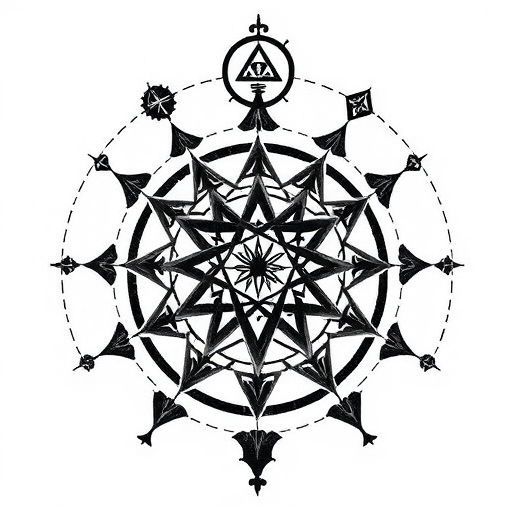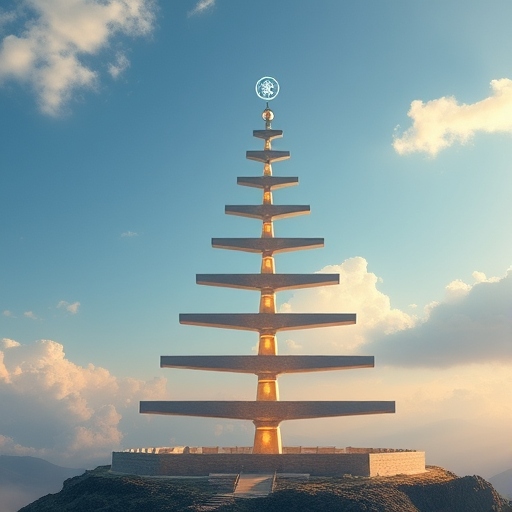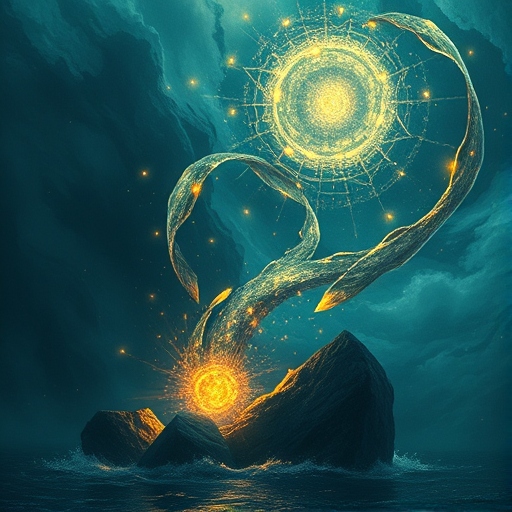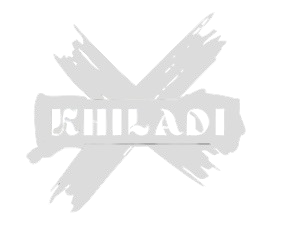
Throughout history, occult brotherhoods have captivated public imagination with their mysterious rituals, secret doctrines, and whispered influence over world events. Rooted in esoteric traditions, these secret societies often claim to guard ancient wisdom accessible only to initiates. While their actual power and reach remain topics of debate, their influence on culture, politics, and conspiracy theories is undeniable. From theories about occult brotherhoods controlling events to their intricate symbolism, these organizations continue to intrigue researchers and the public alike.
In this comprehensive article, we delve into five key practices and beliefs of occult brotherhoods, unveiling their rituals, structure, and hidden philosophies that shape their mystique.
1. The Symbolism and Language of Secrets
A defining characteristic of occult brotherhoods is their use of complex symbols, hand signs, and coded language. These symbols communicate layered meanings that initiate members into deeper philosophical or mystical truths. Symbols such as the pentagram, Eye of Providence, and ouroboros (a serpent eating its tail) have roots in ancient traditions and represent cosmic principles of balance, unity, and enlightenment.
The Freemasons, one of the most well-known occult brotherhoods, use the square and compass symbol with the letter “G” at the center, representing geometry and God. Similarly, the Rosicrucians are associated with the rose and cross, symbolizing secrecy and spiritual awakening. Occult brotherhoods in history have often incorporated sacred geometry and alchemical imagery to convey their teachings.
Symbolism also extends to architecture, as conspiracy theorists have linked Masonic influence to the design of major landmarks, including Washington, D.C.’s layout and European cathedrals. Whether these connections reflect intentional design or imaginative associations, the presence of esoteric symbols in public spaces feeds theories about occult brotherhoods controlling events.

2. Secret Rituals and Initiation Ceremonies
One of the most intriguing aspects of occult brotherhoods is their ritualistic practices. Rituals serve both as transformative experiences for initiates and as reenactments of esoteric principles. Initiation often symbolizes death and rebirth, mirroring ancient mysteries like those of Eleusis and Egypt, where spiritual awakening was depicted as a journey from darkness into light.
In Freemasonry, initiations are elaborate ceremonies involving blindfolds (symbolizing ignorance), the presentation of tools (such as the trowel and apron), and oaths of secrecy. The initiate progresses through degrees, each revealing deeper truths about morality, divine order, and the nature of existence. Similarly, other societies like the Hermetic Order of the Golden Dawn use ritual magic to invoke spiritual energies and guide personal transformation.
Secret rituals of occult brotherhoods contribute to the fascination and fear surrounding these groups. Critics view the secrecy as a means to hide sinister motives, while members claim it preserves sacred wisdom. These rituals are a powerful bonding mechanism, creating a sense of exclusivity and loyalty that transcends ordinary social ties.
3. Hierarchical Structure and Ascension
Hierarchy is fundamental to occult brotherhoods, where members ascend through ranks by demonstrating knowledge, commitment, and understanding of esoteric truths. Progression is often marked by degrees or titles, with each level unlocking new teachings and privileges. This structure mirrors ancient mystery schools, where initiates were gradually exposed to cosmic laws and divine knowledge.
Freemasonry, for instance, is structured around three main degrees: Entered Apprentice, Fellowcraft, and Master Mason. Beyond these basic levels, members can pursue higher degrees within systems like the Scottish Rite or York Rite, where advanced philosophical and spiritual concepts are taught. Similarly, the Rosicrucians claim to guide members through stages of spiritual enlightenment, blending Christian mysticism with alchemical symbolism.
The hidden power of occult brotherhoods explained through their hierarchy reflects their emphasis on personal growth and intellectual exploration. However, this secrecy also gives rise to fears of elite control. Critics argue that the upper echelons of these societies may wield disproportionate influence in politics, finance, and religion. While evidence of such influence remains speculative, the perception of power concentrated in secretive groups persists.

4. The Pursuit of Hidden Knowledge
The essence of occult brotherhoods lies in their quest for esoteric wisdom. This hidden knowledge, often rooted in ancient traditions, seeks to explain the mysteries of the universe, the nature of the soul, and the relationship between humanity and the divine. Influences range from Hermeticism and Kabbalah to alchemy and Gnosticism.
For example, the Rosicrucians believe in a synthesis of science, religion, and mysticism, aiming to unlock the secrets of creation through symbolic interpretation and spiritual discipline. The Hermetic Order of the Golden Dawn, active in the late 19th and early 20th centuries, practiced ceremonial magic to explore the higher planes of existence. Their rituals, based on Hermetic, Egyptian, and Christian symbolism, sought to harmonize spiritual and material realities.
Examples of behavioral conditioning in society, such as the use of esoteric principles in modern self-help and meditation movements, demonstrate the enduring influence of occult teachings. The belief that thoughts shape reality, popularized in works like The Secret, echoes ancient Hermetic maxims such as “As above, so below.”

5. Influence on Politics and Social Movements
The most controversial aspect of occult brotherhoods is their perceived influence on global events. While documented examples of fraternal organizations influencing politics exist, conspiracy theories often exaggerate their power, attributing world-shaping decisions to secret agendas. Claims that prominent leaders are members of occult societies feed theories about occult brotherhoods controlling events.
Freemasonry has been associated with the founding of the United States, as several Founding Fathers, including George Washington and Benjamin Franklin, were Masons. The use of Masonic symbols in American currency and national architecture fuels speculation about hidden control. Similarly, groups like the Skull and Bones, based at Yale University, are often linked to political and business elites. Critics believe these secretive networks groom future leaders and exert influence through undisclosed alliances.
While some allegations lack verifiable proof, the idea that secret societies shape global governance reflects broader anxieties about transparency, power, and inequality. These theories persist because secrecy itself invites speculation, blurring the line between fact and fiction.
Conclusion
Occult brotherhoods remain a potent symbol of hidden knowledge, secret rituals, and perceived influence. From the ancient mysteries of Egypt to modern fraternal organizations, their practices and beliefs captivate those intrigued by the unseen forces shaping human history. Understanding their symbolism, rituals, hierarchies, and influence offers insight into why these groups continue to provoke fascination and fear. While the truth about their power may be elusive, their impact on culture, spirituality, and conspiracy theories is undeniable.
If you want to read more: CLICK HERE
